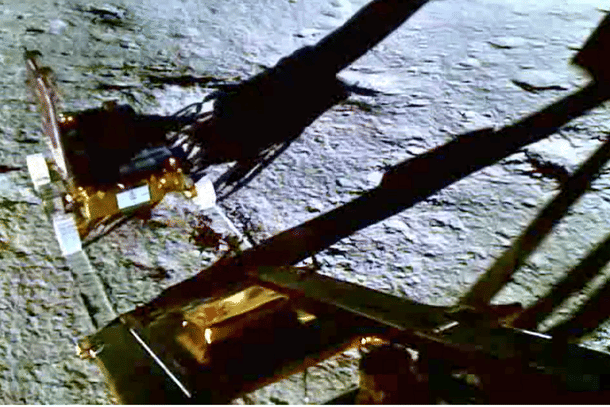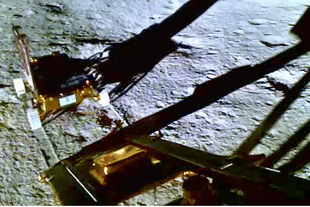Science
Chandrayaan-3: How Pragyan Rover Is Navigating The Tough Lunar Obstacle Course
Swarajya News Staff
Aug 28, 2023, 12:45 PM | Updated 12:45 PM IST
Save & read from anywhere!
Bookmark stories for easy access on any device or the Swarajya app.


The surface of the Moon isn't exactly an ice skating rink. The unevenness of terrain is further pronounced in the polar regions.
Currently, in the south pole region, India's Pragyan rover is having to navigate this rough terrain — of course, not without help from the control room back home that is guiding and monitoring the lunar explorer.
In recent good news, the rover reportedly overcame the first major obstacle on its path — a lunar crater that is 100 mm (10 cm) deep.
Speaking to the Times of India, Chandrayaan-3 project director P Veeramuthuvel said, "We were very anxious about the first crater, but that obstacle has been overcome."
Veeramuthuvel explained that the rover operations were not fully autonomous. Pragyan's movements faced numerous challenges that required the involvement of ground teams to overcome them one by one.
For a sense of how rover mobility is executed, every time the rover has to move from one point to another, the data captured by its onboard navigation camera must be downloaded back on Earth for the purpose of generating what's called a "digital elevation model."
Then, a decision is made on the course the rover must take and commands are relayed accordingly.
Still, there are other limitations. For instance, "Every time the rover is commanded to move, it can at best cover five metres ('maximum DEM')," the Chandrayaan-3 project director told The Times of India.
The Indian space agency has successfully executed multiple rover movements so far, despite other limitations such as intermittent telemetry and telecommunications availability, the necessity to continuously track the Sun, and a turnaround time of about five hours between each movement operation, as explained by Veeramuthuvel.
Due to the Sun's rotation of 12 degrees each day, the rover's deployable solar panel must account for this movement. Unlike the lander, which has solar panels on three sides, the rover on side only has half the space available for solar cells.
The rover's data rate is restricted because it can only communicate with the lander, which then needs to transmit the data to the ISRO control room.
This process takes time as scientists analyse the incoming science data from the rover's payloads. Veeramuthuvel expressed confidence in the team's careful planning and the rover's ability to perform well.





